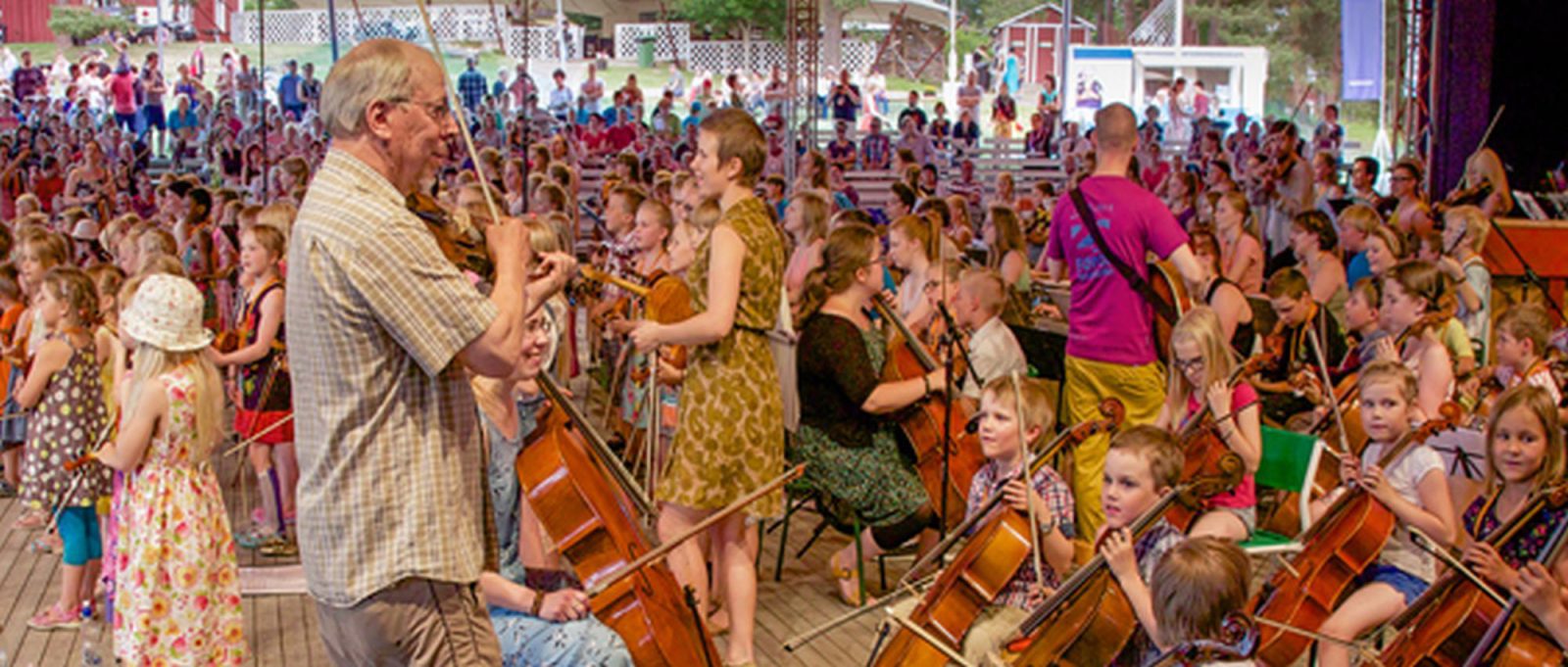
Finland launches preparation of nominations for inscription on UNESCO’s List of Intangible Cultural Heritage
Finland is preparing to nominate two elements for inscription on UNESCO’s List of Intangible Cultural Heritage. One element can be nominated per year. Preparations for the nomination of the Finnish tradition of sauna bathing will begin first. The nomination will be submitted to UNESCO in March 2019. The next element to be nominated is the Kaustinen folk fiddling tradition. The Finnish Heritage Agency, mandated by the Ministry of Education and Culture, is responsible for the preparation of the nominations in cooperation with background communities.
“Finland has a lot of excellent living heritage that can proudly present to the world,” says Minister for European Affairs, Culture and Sport Sampo Terho. “One good example of our intangible cultural heritage is sauna bathing which is a significant element of the Finnish way of life. This multifaceted tradition has long roots and is cherished by the whole nation. The aim is that sauna bathing is the first Finnish element to be nominated for inscription on UNESCO’s List of Intangible Cultural Heritage in March 2019.”
In addition, the preparation of a nomination of the Kaustinen folk fiddling tradition will be launched. The folk fiddling style has been a living element of the community in Kaustinen since the 17th century. The fiddling tradition, passed on from one generation to the next mainly within families, continues to live today in the form of the Näppäri Method and the annual Kaustinen Folk Music Festival. The aim is that the Kaustinen folk fiddling tradition is the second Finnish element to be nominated for inscription on UNESCO’s List of Intangible Cultural Heritage in March 2020.
Decisions on the nominations to be submitted to UNESCO will be made by the Ministry of Education and Culture based on a proposal of the Finnish Heritage Agency and the expert group on intangible heritage. The Finnish Heritage Agency, together with the communities behind the cultural heritage elements, is responsible for the preparation.
UNESCO Convention and the National Inventory of Living Heritage
Finland signed the UNESCO Convention for the Safeguarding of the Intangible Cultural Heritage five years ago. The Convention promotes the protection of intangible cultural heritage and makes the diverse cultural traditions of people, communities and groups visible. The Finnish Heritage Agency is responsible for the implementation of the Convention in Finland.
Under the Convention, intangible cultural heritage shall be inventoried both at national and international level. UNESCO maintains two Lists of Intangible Cultural Heritage and a Register of Good Safeguarding Practices. The purpose of the lists is to bring visibility to the living heritage and to share good practices among countries.
In Finland, elements of intangible cultural heritage are inventoried in the Wiki-Inventory for Living Heritage. Last spring, there was an opportunity for communities to propose their elements listed in the Wiki-Inventory to be included in the National Inventory of Living Heritage. In November, the Ministry of Education and Culture selected the first 52 elements to be included in the National Inventory of Living Heritage. Finland has the possibility to nominate one of these elements per year for inscription on UNESCO’s Lists of Intangible Cultural Heritage.
Inquiries:
Mirva Mattila, Senior Ministerial Advicer, Ministry of Education and Culture, mirva.mattila@minedu.fi, tel. +358 (0) 295 33 0269
Leena Marsio, Senior Adviser, Finnish Heritage Agency, leena.marsio@museovirasto.fi, tel. +358 (0)295 33 6017
#eläväperintö
Read more:
Wiki-Inventory for Living Heritage